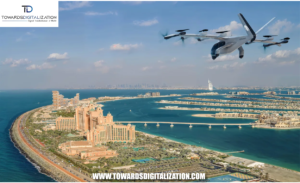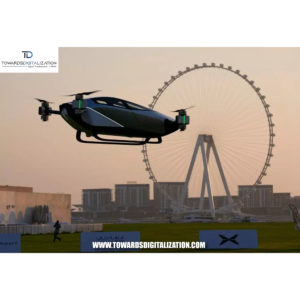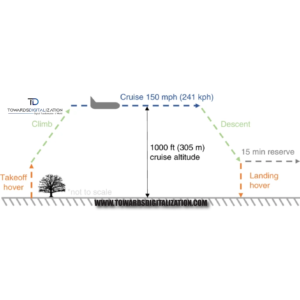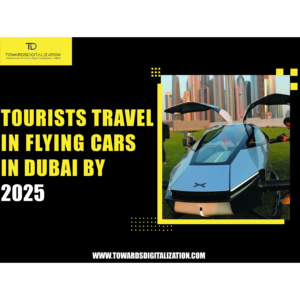Introduction
Are flying cars really a thing of the future?The UAE seems to think otherwise.By 2025, Flying cars are set to revolutionize transportation. Imagine being able to soar through the skies, bypassing traffic jams and reaching your destination in record time.
This futuristic vision is soon to become a reality, thanks to advancements in technology and the innovative mindset of the UAE. Stay tuned as we delve deeper into what these flying cars mean for the future of transportation in the UAE.
The Vision of Flying Cars in the UAE
By 2025, the United Arab Emirates plans to introduce flying cars in its skies. The goal is not just about showcasing technological prowess or creating a spectacle. Instead, it’s about revolutionizing the transportation sector and redefining the way people move around cities. The UAE aims for a future where people can skip traffic and travel effortlessly through the air.

The Pioneers Behind the Vision
Leading the charge in this futuristic endeavor are a group of innovators, visionaries, and forward-thinkers who are dedicated to turning the dream of flying cars into a tangible reality. These pioneers are pushing the boundaries of technology, engineering, and aviation to make it possible for ordinary people to fly.
Moreover, they are reshaping urban mobility with their relentless passion and commitment. Driven by the belief that flying cars can make our lives more convenient, reduce carbon emissions, and alleviate traffic congestion, they are paving the way for a more sustainable future.
Technological Innovations Driving the Dream of Flying Cars
The development of flying cars is not just a pipe dream; it’s backed by cutting-edge technological innovations that are making it possible. From advances in battery technology to the use of lightweight materials and advanced navigation systems, every aspect of flying car design is being carefully crafted to ensure safety, efficiency, and sustainability.
The UAE is driving innovation and technological advancements in aviation, bringing us closer to a cleaner and faster era of transportation.
Regulatory and Infrastructure Preparations
But the road to flying cars is not just about technology . It also requires robust regulatory frameworks and infrastructure preparations to ensure a smooth transition to this new mode of transportation.
The UAE government is collaborating with industry stakeholders to tackle issues related to safety, air traffic management, and public acceptance of flying cars. Additionally, they are working closely with experts to address regulatory concerns and develop guidelines for the safe integration of flying cars into urban airspace.. The UAE is preparing for the integration of flying cars by establishing vehicle certification standards, air corridors, and landing pads.With careful planning and collaboration, the vision of flying cars in the UAE is well on its way to becoming a reality by 2025.

Challenges and Considerations of Flying Cars
Flying cars in UAE by 2025 is exciting, but several challenges and considerations need to be addressed. One of the major challenges is the infrastructure needed to support flying cars. The current road network would need to be upgraded to include designated air corridors and landing pads for these vehicles to safely take off and land.
Another consideration is the technology required for flying cars to operate efficiently and safely. There needs to be advancements in battery technology to ensure that these vehicles can fly for extended periods without the need for frequent recharging. Additionally, the software and communication systems need to be top-notch to prevent any accidents or collisions in the air.
Safety and Regulation Concerns
Safety is a top priority when it comes to introducing flying cars to the UAE. There are concerns about the potential for air traffic congestion and the need for strict regulations to ensure that these vehicles can coexist safely with traditional aircraft. It will be crucial to establish clear guidelines for pilot training and certification, air traffic control systems, and emergency protocols in case of accidents.
Regulations will also need to address liability issues in the event of accidents involving flying cars. Before flying cars hit the skies, it’s crucial to determine fault and insurance claims handling.
Environmental Impact and Sustainability
As with any new transport technology, the environmental impact of flying cars must be carefully considered. These vehicles have the potential to reduce traffic congestion on the roads, but they could also contribute to increased noise pollution and carbon emissions in the air. It will be essential to develop sustainable fuel options for flying cars to minimize their carbon footprint and protect the environment.

Public Perception and Acceptance of Flying Cars
Public perception and acceptance will play a significant role in their success in the UAE. While the idea of flying cars may seem like something out of a science fiction movie, it will be essential to educate the public about the safety and benefits of these vehicles. Building trust and confidence in this new mode of transportation will be key to gaining widespread acceptance among residents and visitors alike.
Looking Towards the Future
As we move further into the 21st century, the idea of flying cars no longer seems like a far-fetched concept from science fiction novels. The United Arab Emirates (UAE) is setting its sights on having flying cars as a reality by 2025. This ambitious goal is a testament to the rapid advancements in technology and innovation that are shaping our future.
Expected Impact on Daily Life and Economy</h3>
Flying cars in the UAE will have a big impact on daily life and the economy. Additionally, traffic-clogged commutes will be reduced to minutes with revolutionary intercity travel. This efficiency could lead to increased productivity and improved quality of life for residents. From an economic standpoint, the development and deployment of flying cars could create new industries and job opportunities.
Furthermore, the UAE aims to introduce flying cars in 2025, positioning itself as a global leader in technology and transportation. In addition, it has created a roadmap for collaboration with relevant parties to integrate them into existing infrastructure.
Beyond 2025, the UAE envisions a future where flying cars are commonplace and accessible to everyone. Flying cars have the potential to reduce traffic congestion, lower carbon emissions, and improve overall transportation efficiency. UAE is leading the way towards a future where the sky is no longer the limit.
Conclusion
In conclusion, the prospect of flying cars becoming a reality in the UAE by 2025 is truly exciting. The advancements in technology and the government’s commitment to innovation make this a very plausible scenario. Imagine the convenience and efficiency that flying cars could bring to our daily lives, reducing traffic congestion and revolutionizing transportation. However, it’s essential to consider the potential challenges such as regulation, safety, and infrastructure. Let’s ensure proper measures for any issues that may arise with futuristic transportation. The future certainly looks promising for flying cars in the UAE.








